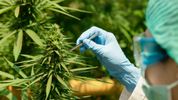As a result of the current pandemic, the FDA has announced that, temporarily, it will not penalize pharmacists in state-licensed pharmacies, federal facilities, or registered outsourcing facilities for making hand sanitizer for consumer or health care use. One caveat is that pharmacists must follow the FDA's "recipe," consisting of:
1.) Alcohol (ethanol) (80%, volume/volume (v/v)) in an aqueous solution denatured according to Alcohol and Tobacco Tax and Trade Bureau regulations in 27 CFR part 20; or Isopropyl Alcohol (75%, v/v) in an aqueous solution;
2.) Glycerol (1.45% v/v);
3.) Hydrogen peroxide (0.125% v/v);
4.) Sterile distilled water or boiled cold water.
No other ingredients may be added, and pharmacists must be sure to add the correct amounts of each FDA-approved ingredient. Additionally, the hand sanitizer must be made under the same conditions regularly used by pharmacists to make similar nonsterile products. Lastly, pharmacists must label the hand sanitizer with FDA-provided labeling (attached in link).
We understand that some consumers and health care professionals are currently experiencing difficulties accessing alcohol-based hand sanitizers. We are also aware of reports that some consumers are producing hand sanitizers for personal use; the Agency lacks information on the methods being used to prepare such products and whether they are safe for use on human skin. We further recognize that compounders, relative to untrained consumers, are more familiar with standards and methods for producing drug products.
 unknownx500
unknownx500










